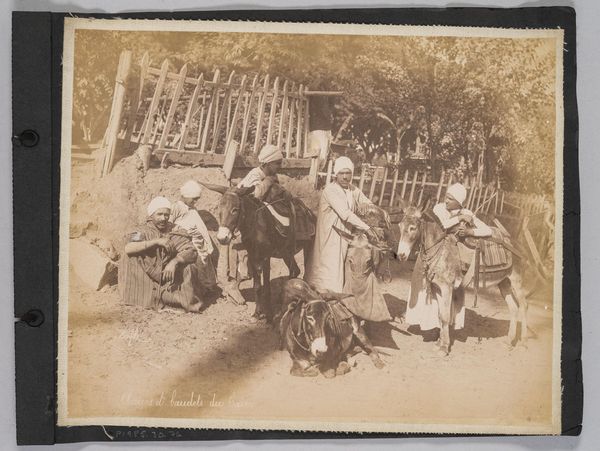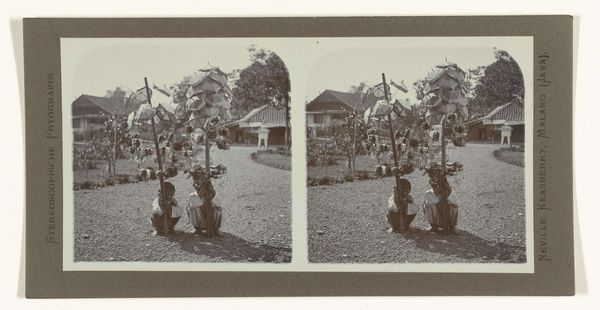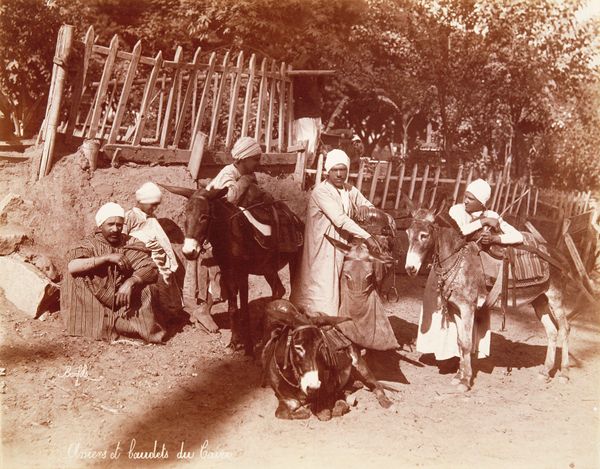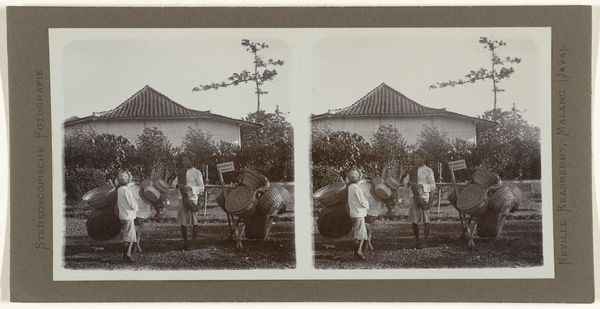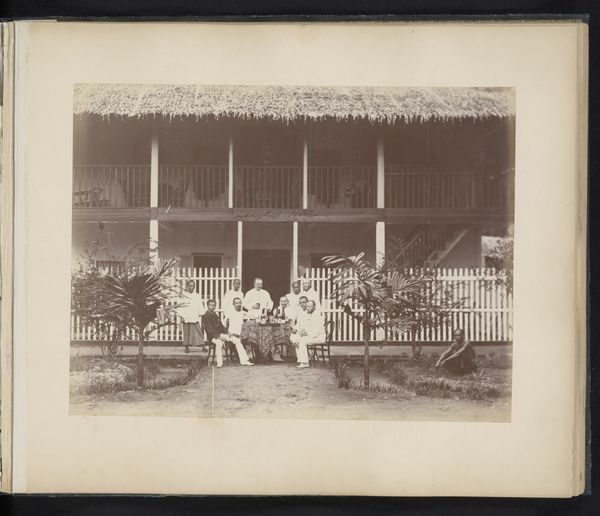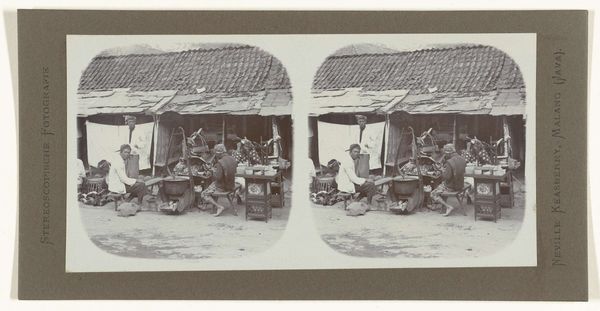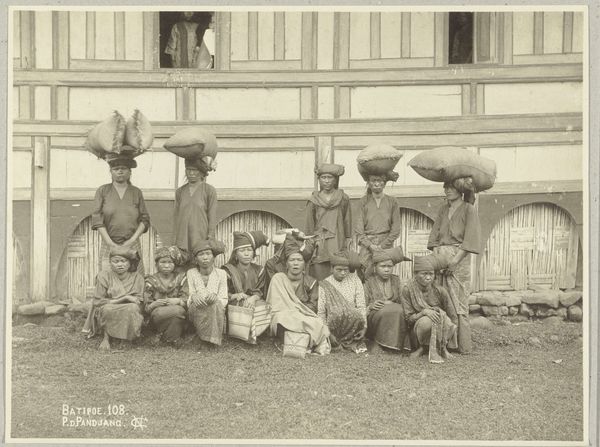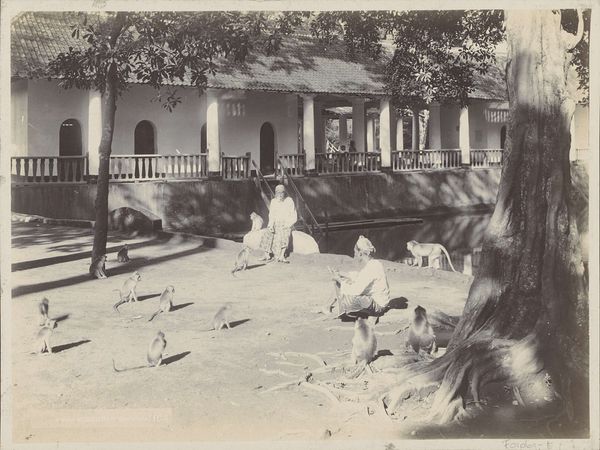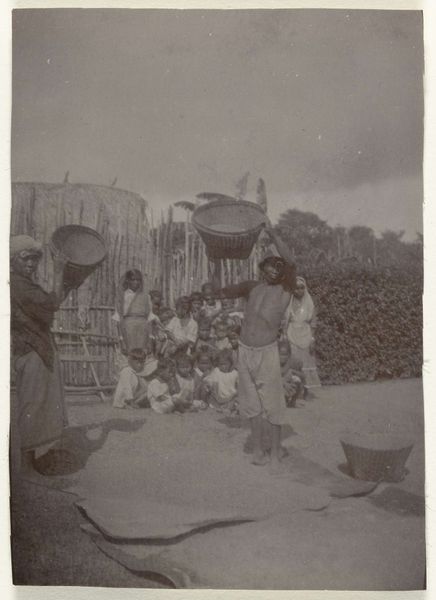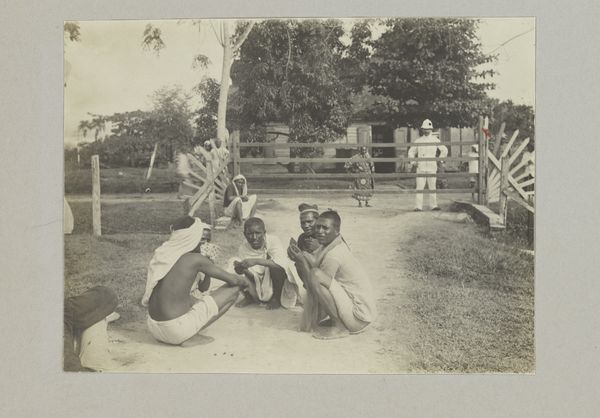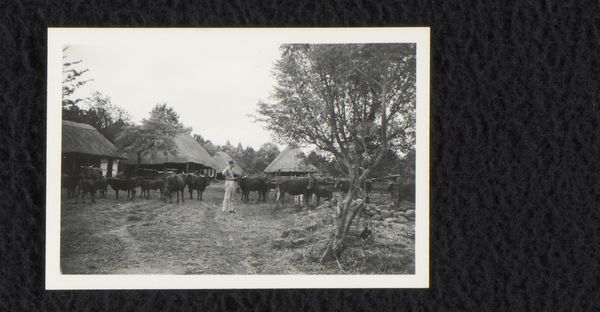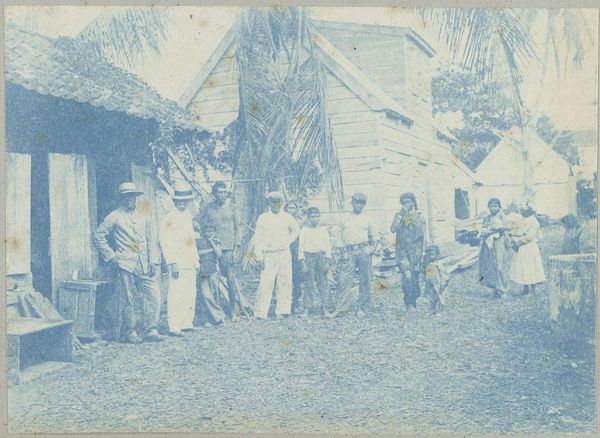
albumen-print, photography, albumen-print
#
albumen-print
#
portrait
#
landscape
#
archive photography
#
photography
#
historical photography
#
19th century
#
albumen-print
Dimensions: height 85 mm, height 52 mm
Copyright: Rijks Museum: Open Domain
Curator: This albumen print, likely created between 1850 and 1880, is titled "Indonesische man voor kar met twee ossen," translating to "Indonesian man before cart with two oxen." It's held here at the Rijksmuseum. Editor: The first thing that hits me is the stillness. There’s a kind of profound quiet captured, like the humid air itself is holding its breath. Curator: That stillness, I think, stems from the carefully constructed pose. Consider how photography functioned in this era. It’s not just a snapshot; it’s a constructed image meant to convey very specific messages about labor, colonialism, and even ideas of the "exotic." Note the framing: The subject, his oxen, the very basic dwelling. Editor: You’re right, that domestic scene behind… It does have a performative element, doesn’t it? But there's something quietly rebellious in his eyes. He's not looking down or away. There’s a level of assessment there, an exchange that flips the observer-observed dynamic. Or am I just projecting? Curator: Projection isn’t necessarily a bad thing. But I think to read into that gaze fully, we need to consider the photographers themselves, Woodbury & Page. Their business thrived catering to a European market eager for these glimpses of the "Orient," solidifying power structures and colonial narratives. Was the agency there on the part of the man or a subtle performance directed by the photographer? Editor: Okay, putting on my rebel yell aside. Even recognizing all the complex power dynamics, the detail in the albumen print... You can see every ripple on those oxen’s hides and almost feel the weight they're bearing. It invites contemplation beyond the historical gaze. Curator: Indeed, despite the complexities and the historical context laden with power dynamics, the print provides value through its details about a culture’s mode of work and ways of life, particularly how labor and landscape are intertwined. Editor: So, it's this tangled dance between intention and interpretation. History imprinted onto something beautiful, something deceptively still. Curator: Exactly. These glimpses into history, while undeniably complex, provoke essential conversations. Editor: Makes you wonder, doesn't it, about the stories behind that stillness?
Comments
No comments
Be the first to comment and join the conversation on the ultimate creative platform.
